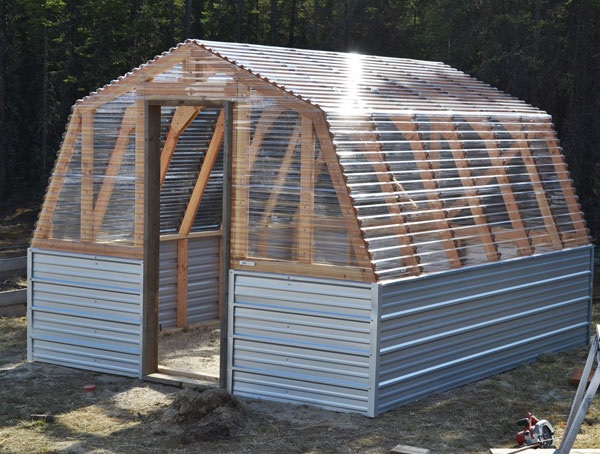Tips for Selecting a Hobby Greenhouse
By Elizabeth Cornell Fake, Fairfax Master Gardener
 One of the great temptations in a gardening catalog or website is the array of different greenhouse kits you can buy. There’s something for everyone – cold frames, seed houses, window boxes, portables, greenhouse shelves, mini stacks, popups, lean-tos, Quonset huts and any size imaginable gabled house. Some kits costing under $100 can be assembled in two to three hours while others in the $1,000+ range become a major project requiring an electrician and plumber. If you decide to succumb to the temptation to become a greenhouse owner, here are some things to think about before you send off your order.
One of the great temptations in a gardening catalog or website is the array of different greenhouse kits you can buy. There’s something for everyone – cold frames, seed houses, window boxes, portables, greenhouse shelves, mini stacks, popups, lean-tos, Quonset huts and any size imaginable gabled house. Some kits costing under $100 can be assembled in two to three hours while others in the $1,000+ range become a major project requiring an electrician and plumber. If you decide to succumb to the temptation to become a greenhouse owner, here are some things to think about before you send off your order.
Size
Size is the most important factor in your choice. If your space is limited, you will want a cold frame or portable window box. If you have ample space, you can be ambitious about what you want to grow.
A good size for a free-standing greenhouse is 8 feet wide x 12 feet long which will allow shelves on each side, with 6-foot eaves to let in plenty of light. A good piece of advice is to buy 25 percent more space than your original estimate.
 Location
Location
A greenhouse needs plenty of light, so plan for a southern or southwest exposure for maximum sunlight. Try to find an open site close to the house without too many trees to shade the sun, or tree roots what will upset the foundation. Also, look for a site where the structure will be on level ground without sloping terrain.
Materials
The choice of building materials poses a comparison between cost and upkeep. Aluminum is less expensive than wood and requires less upkeep, but it will have a shorter life and will need replacement sooner. Wood is an elegant choice and will last longer, but it will require more maintenance.
 Glazing
Glazing
Glazing is the choice of window material. Glass is traditional but very heavy to install and will require some skill to assemble. Toughened glass is expensive but is good for high traffic areas where kids play. Polycarbonate is less expensive, insulates more thoroughly, but allows less light. It can also pop out of the frame in high winds.
Flooring
Flooring is key to proper drainage and humidity. Aim for a firm level floor of hard-packed soil and sand covered with gravel or paving slabs.
Environmental Factors
Greenhouses require adequate ventilation to exchange inside for outside air, remove moisture and replace carbon dioxide. Other essential factors are temperature control and access to water. There are many options for automatic environmental controls, which will keep the temperature at about 60 degrees for optimal growing condition, but they require professional installation and are expensive to operate. Some enthusiasts keep costs down by watering with a conveniently located hose and using louvers to open the windows for ventilation.
Resources
Hobby Greenhouses, John W. Worley, University of Georgia Extension, Bulletin 910